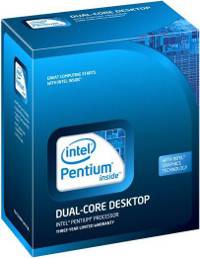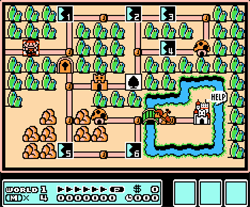- Qualcomm Launches Snapdragon 4 Gen 2 Mobile Platform
- AMD Launches Ryzen PRO 7000 Series Mobile & Desktop Platform
- Intel Launches Sleek Single-Slot Arc Pro A60 Workstation Graphics Card
- NVIDIA Announces Latest Ada Lovelace Additions: GeForce RTX 4060 Ti & RTX 4060
- Maxon Redshift With AMD Radeon GPU Rendering Support Now Available
The New-Age Nickel & Diming

Over the course of the past couple of years, there’s been a growing trend that’s both frustrating and expensive to consumers. It also shows no sign of slowing down, and ironically, many of us contribute to it. As the title of this editorial suggests, this trend amounts to what I like to call new-age nickel and diming.
Being a tech writer, I’m constantly immersed in what I might have to call a “digital life”. From the moment I wake up in the morning to the moment I hit the pillow at night, I almost feel like I’m living life by way of printed circuit boards and pixels. Of course, with such immersion comes rather strong likes and dislikes, and over the course of the years, I’ve certainly had many of both.
Some of these are strong enough to stand out from the rest, though, and one growing trend in particular has left me a bit frustrated. It’s a practice that seems simple, but in essence amounts to hardcore nickel and diming.
I was a child of the 80’s, and though I’m not exactly bursting at the seams with acquired wisdom or have gray hair to lead you to believe I do, I grew up with some of the earliest game consoles, such as the NES and Mega Drive, and have evolved alongside gaming through its various stages. Personally, I don’t find gaming today to be anything like gaming in those days, or even in the 90’s. It’s not the quality of the games I’m talking about, but rather the business side of things.
When I played a game such as Super Mario Bros. 3, I had no worry of not having the entire game in front of me. Getting to the end would require nothing but time and skill, and when done, I could relish in the fact that I just beat a full-featured game.
More recently, though, game publishers have embraced the idea of delivering people an “unfinished game”, only to hopefully squeeze more cash out of them at a later date by way of unlockable content. Let’s face it. Many games in the 90’s took us 20 or more hours to beat, and in some cases, much more than 40. Today, we’re lucky in some cases if we’re able to stretch a game to more than 10 hours worth of gameplay.
In some cases, that can be considered a good thing. With our busy lives and family responsibilities, there is only so much time that can be dedicated to a pastime, and if a game happens to take 40 hours to beat or even more, then it might begin to look unappealing. But to me, there’s a huge difference between wanting that and not receiving it from the start.
A common scenario with games today is one where a game costs $50 or more for everyone, and then those people who want to extend their game time will haul out a bit extra. Sometimes, this form of “Downloadable Content” is genuinely worth the set price, but most often, it’s not. And if there’s one thing I hate… it’s feeling like I just got ripped-off.
Before I go further, I should mention that all of what I’m ranting about here hasn’t affected me personally. I’ve been fortunate enough in recent years to receive all of the games and DLC I play for free, thanks to generous publishers. However, I have a bit of an advocate mindset, and if the idea of something bothers me, even if it doesn’t affect me, I still feel compelled to talk about it, hence the reason for this editorial.
To be fair to the developers and publishers, games today cost a lot more to develop than those in past years, and in that regard, it’s easy to understand why DLC exists. It helps increase the revenue to those who just spent millions of dollars in developing a title. But even so, game prices have never changed for the better, and all the while, our games continue to get shorter.
The absolute worst kind of DLC to me is the one that offers a modest addition of features and value, but still costs money to purchase. Some can offer little more than additional multiplayer modes, or maps that utilize content already in the game… but still cost a cool $10 or more. It feels even more like a rip-off when it’s realized that some DLC is even included with the game from the get go. How good could it feel to pay $10 for a 15 kilobyte patch?
Games I grew up with were “complete” from the moment I purchased them (ahem, my mother purchased them). I’d pop those suckers into a console or install them on a PC and enjoy them through to the end. Today, it’s hard to feel like you’re ever purchasing a “full” game, because there’s sure to be DLC en route. Sometimes it’s even announced before the actual game launches.
The most recent example for a game I’ve played has been with Mafia II. It came out with a $10 piece of DLC a mere two weeks after the game’s launch. Clearly, the content was already completed, so why not include it in the game and extend the gamer’s ~10 hour game time?
It’s of course to increase revenue and nothing else. Game developers are now thriving on these schemes, and funny enough, gamers keep on paying. And I admit… I’d no doubt succumb to it as well. While I might grind my teeth while hauling my wallet out to get my credit card to pay for a charge that shouldn’t exist, could extra gameplay for a game I love simply be ignored?
I do have to give kudos to companies like Valve, though, because it has been faithfully delivering DLC to its customers at no charge at all (the exception is on the consoles, which the company has no control over). Of most benefit, Team Fortress 2 has seen a countless number of updates since its launch, and each time a new one is announced, gamers enjoy the fact that they won’t have to pay for it. They already paid for the game and gave Valve their continued business, and thus the company continues to thank them for it.
Up to this point, I’ve focused a lot on one kind of DLC, and for games specifically, but the reason is because this is an area where the practice is seen most often, and also because its roots were planted long ago.
The first type of DLC that caught my eye came courtesy of Electronic Arts, which regularly offered DLC that amounted to nothing more than a saved game hack. In recent Need for Speed titles, for example, people can spend about $8 to unlock cars that can be gained via normal progression. In essence, it’s a premium charge for the lazy, or for those who are time-conscious.
As much as I dislike game DLC, the upsetting thing is that such “nickel and diming” is becoming a way of life. In some cases, there’s good (but perhaps debatable) reason for it. Take Microsoft, for example, which allows people to upgrade their OS from one edition to the next, all without moving from their chair. Does this fall into the same nickel and diming sort of scheme? I personally don’t think so.
In this case, people purchase a specific edition of Windows, and if they so choose that they need more advanced features, they can upgrade to a better edition. That’s unlike gaming, where there’s one version of a game, and extensions released down the road. There might be “Deluxe” editions at the get go, but that’s not the same thing unless it includes what’s in effect, DLC.
Micro-transactions have also become a large part of our mobile life, but at least in that case, it’s because the added applications are developed by third parties, and even if not, they add robust functionality, not some feature that feels like it should have come with the phone. If you had to pay $5 to unlock the ability to call someone, that’d be a little troublesome.
 Intel Pentium G6951 |
The most recent example of this “unlocking” truly made me shake my head though, because it has nothing to do with software, but rather hardware. That hardware in question is Intel’s Pentium G6951 processor. “Unlock what?”, you might ask? Well, performance.
Though still in its pilot stage, Intel is working with some retailers in offering an “Upgrade Service” for PC’s equipped with this processor. If people want to pony up the fee ($50), a larger cache is enabled, along with HyperThreading – two things that can make a major difference in the performance in many scenarios.
This means that by default, the CPU included in a PC is crippled, and unlocking its full potential is just a fee away. This is almost exactly like the “DLC” that’s already included on the shipping install media of some games. Of course, this test by Intel is being kicked off with a goal that the company shares with game developers that offer DLC… increased revenue. It gives people the ability to buy one CPU, and pretty well upgrade it to another later on without opening the PC. I never thought I’d see that happen.
Even in an age where it’s become common practice to pay out these micro-payments in all directions, I’m not quite sure that Intel’s idea is going to work too well. At least where DLC and upgraded versions of software is concerned, people are generally going to be able to see the differences in front of their eyes. How exactly will Intel portray increased performance to its customers in a meaningful way?
Over the past couple of years, the idea of micro transactions, DLC and other similar schemes has been on the rise, and it’s not going to slow down. With Intel jumping on the bandwagon by offering an unlocking fee for one of its processor models, it could be a sign that such ideas are soon to expand past software and into hardware.
Will we see mobile phones with built-in 4G capabilities be limited to 3G until a fee is paid? Will we see graphics cards that lock off a grid of processing cores until a fee is paid? Will we see a computer display that limits the screen resolution until a fee is paid?
Alright, I’m getting a little carried away there, but the question still stands… is this the way of the future? Is everything going to be modular 10 years down the road, where we essentially start from the bottom and build things up, and end up paying more in the end? It seems overly complex and with obvious downsides, doesn’t it?
Discuss this article in our forums!
Have a comment you wish to make on this article? Recommendations? Criticism? Feel free to head over to our related thread and put your words to our virtual paper! There is no requirement to register in order to respond to these threads, but it sure doesn’t hurt!
Support our efforts! With ad revenue at an all-time low for written websites, we're relying more than ever on reader support to help us continue putting so much effort into this type of content. You can support us by becoming a Patron, or by using our Amazon shopping affiliate links listed through our articles. Thanks for your support!








